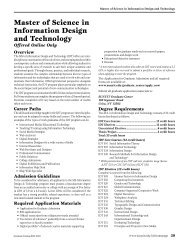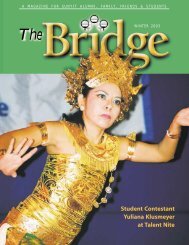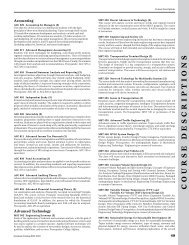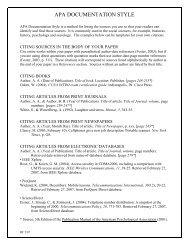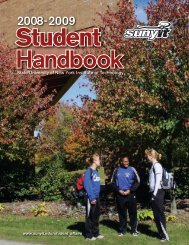Expanding the Public Sphere through Computer ... - ResearchGate
Expanding the Public Sphere through Computer ... - ResearchGate
Expanding the Public Sphere through Computer ... - ResearchGate
Create successful ePaper yourself
Turn your PDF publications into a flip-book with our unique Google optimized e-Paper software.
CHAPTER 6. ANALYZING THE TALK.ABORTION NEWSGROUP 92<br />
Table 6.7: Message Reciprocity By Author Groups<br />
Author Mean Mean Mean Mean Mean<br />
Group Messages Follow Messages Led Difference<br />
Followed Ratio Led Ratio Ratio<br />
Very Frequent 5831.93 4.86 5919.07 4.76 1.06<br />
Frequent 1421.43 7.56 1377.23 7.41 1.06<br />
Occassional 484.93 9.60 478.31 9.39 1.06<br />
Infrequent 239.08 11.19 230.80 10.78 1.12<br />
Very Infrequent 89.34 14.49 85.35 13.94 1.39<br />
Two-time 32.21 16.12 29.27 14.66 2.02<br />
One-time 14.92 14.92 14.39 14.39 2.19<br />
All Authors 116.00 14.47 113.30 13.82 1.86<br />
F =2:65 F =2:06 F =5:69<br />
p =0:01 p = :05 p =0:00<br />
bined total of 1,000 unique messages, and led a total of 1,200 unique messages.<br />
With this data, three additional measures can be calculated. The follow ratio is<br />
<strong>the</strong> ratio of followed messages to authored messages, in this case 1000 : 100 or<br />
10:00. The led ratio is <strong>the</strong> ratio of led messages to authored messages, in this case<br />
1200 : 100 or 12:00. Finally, <strong>the</strong> difference ratio is ratio of followed messages to<br />
led messages, in this case 1000 : 1200 or :83. Difference ratios less than one indicate<br />
that an individual author leads more messages than he follows. Difference<br />
ratios greater than one indicate <strong>the</strong> opposite effect.<br />
Table 6.7 illustrates trends in message reciprocity. As would be expected, <strong>the</strong><br />
mean messages followed and mean messages led are strongly correlated with<br />
number of messages contributed. The very frequent authors averaged 5,831 followed<br />
messages, and 5,919 led messages. The mean follow and mean led ratios<br />
are lower for <strong>the</strong> more frequent author groups; an analysis of variance of <strong>the</strong> two<br />
ratios indicate significant differences across <strong>the</strong> groups. More frequent authors<br />
follow and lead, on a per message basis, fewer messages than less frequent authors.<br />
Additionally, a comparison of <strong>the</strong> mean difference ratios indicates that<br />
more frequent authors, on average, are about equally likely to lead messages and<br />
to follow messages. Less frequent authors, on <strong>the</strong> o<strong>the</strong>r hand, are, on average,<br />
much more likely to follow messages than to lead messages.





